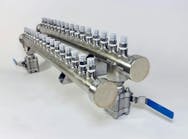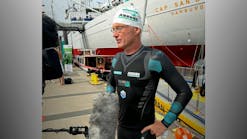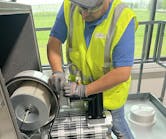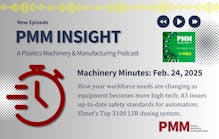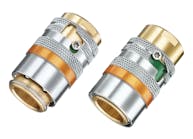By Bruce Geiselman
Epson Robots has updated its programming software for SCARA robots with a simple visual interface that is more intuitive and easier to use, helping customers overcome barriers to adopting automation, the company said.
Plastics processors and other manufacturers are turning to automation to ramp up volume, improve quality and worker safety and reduce costs, Epson said. At the same time, many companies are hiring employees who lack expertise in text-based robot programming languages.
In response to customer requests, Epson developed Epson RC+ Express, intuitive, visual-based software that can be programmed without an understanding of any programming language.
“We are seeing a lot of people who have less automation background than we’ve seen in the past,” said Aaron Donlon, Epson product manager for robots. “That’s why we’re introducing our Epson RC+ Express environment. It’s an easy-to-learn, visual, block-style robotic teaching environment. It’s ideal for customers with little-to-no code-based programming. It allows them to quickly build simple applications.”
Instead of typing in lines of text on a PC, operators can program a robot for a specific task by using a touch tablet with a block-style programming format. The software’s simple-to-navigate visual interface makes it easy to learn and manage key functions like jogging, gripper control and motion, the company said. Ready-to-use templates are included, allowing users to quickly create common pick-and-place, palletizing and depalletizing tasks.
The RC+ Express software works with Epson’s T-Series and LS-B Series robots with payloads from 6.6 pounds to 44 pounds and reaches up to 3.3 feet. It also works with ISO 4 cleanroom versions. It features a tablet-based Windows OS environment. The software is included with the purchase of Epson T-Series All-in-One and LS-B Series SCARA robots with no recurring licensing fees.
The software includes a built-in 3D simulator to help operators visualize and fine-tune applications.
“Pick-and-place and palletizing-depalletizing is really where this product is going to shine,” Donlon said.
Epson Robots, Carson, Calif., 562-290-5910, www.epsonrobots.com
Bruce Geiselman | Senior Staff Reporter
Senior Staff Reporter Bruce Geiselman covers extrusion, blow molding, additive manufacturing, automation and end markets including automotive and packaging. He also writes features, including In Other Words and Problem Solved, for Plastics Machinery & Manufacturing, Plastics Recycling and The Journal of Blow Molding. He has extensive experience in daily and magazine journalism.


